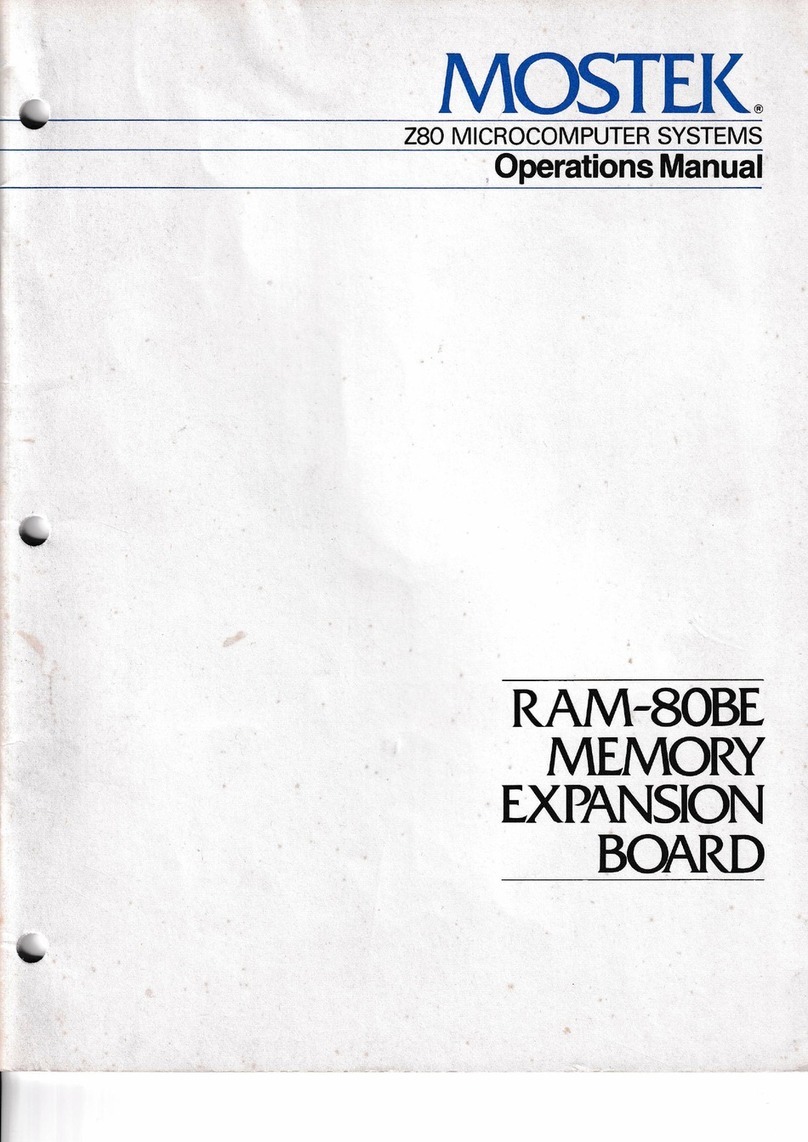lEI Interrupt Enable In (input, active high)
This signal is used to form apriority interrupt daisy chain when more than one interrupt
driven device is being used. Ahigh level on this pin indicates that no other devices of higher
priority are being serviced by aCPU interrupt service routine.
lEO Interrupt Enable Out (output, active high)
The lEO signal is the other signal required to form adaisy chain priority scheme. It is high
only if lEI is high and the CPU is not servicing an interrupt from this PIO. Thus this signal
blocks lower priority devices from interrupting while ahigher priority device is being
serviced by its CPU interrupt service routine.
INT Interrupt Request (output, open drain, active low)
When INT is active the Z80-PIO is requesting an interrupt from the Z80-CPU.
Aq -Ay Port ABus (bidirectional, tristate)
This 8bit bus is used to transfer data and/or status or control information between Port A
of the Z80-PIO and aperipheral device. Aq is the least significant bit of the Port Adata bus.
ASTB Port AStrobe Pulse from Peripheral Device (input, active low)
The meaning of this signal depends on the mode of operation selected for Port Aas follows:
1) Output mode: The positive edge of this strobe is issued by the peripheral to
acknowledge the receipt of data made available by the PIO.
2) Input mode: The strobe is issued by the peripheral to load data from the peripheral
into the Port Ainput register. Data is loaded into the PIO when this signal is active.
3) Bidirectional mode: When this signal is active, data from the Port Aoutput register
is gated onto Port Abidirectional data bus. The positive edge of the strobe
acknowledges the receipt of the data.
4) Control mode: The strobe is inhibited internally.
ARDY Register AReady (output, active high)
The meaning of this signal depends on the mode of operation selected for Port Aas follows:
1) Output mode: This signal goes active to indicate that the Port Aoutput register has
been loaded and the peripheral data bus is stable and ready for transfer to the
peripheral device.
2) Input mode: This signal is active when the Port Ainput register is empty and is
ready to accept data from the peripheral device.
3) Bidirectional mode: This signal is active when data is available in the Port Aoutput
register for transfer to the peripheral device. In this mode data is not placed on the
Port Adata bus unless ASTB is active.
4) Control mode: This signal is disabled and forced to a low state.
Bq -Bj Port BBus (bidirectional, tristate)
This 8bit bus is used to transfer data and/or status or control information between Port B
of the PIO and aperipheral device. The Port Bdata bus is capable of supplying 1.5ma @
1.5 Vto drive Darlington transistors. Bq is the least significant bit of the bus.
BSTB Port BStrobe Pulse from Peripheral Device (input, active low)
The meaning of this signal is similar to that of ASTB with the following exception:
In the Port Abidirectional mode this signal strobes data from the peripheral device
into the Port Ainput register.
BRDY Register BReady (output, active high)
The meaning of this signal is similar to that of AReady with the following exception:
In the Port Abidirectional mode this signal is high when the Port Ainput register is
empty and ready to accept data from the peripheral device.
6





























